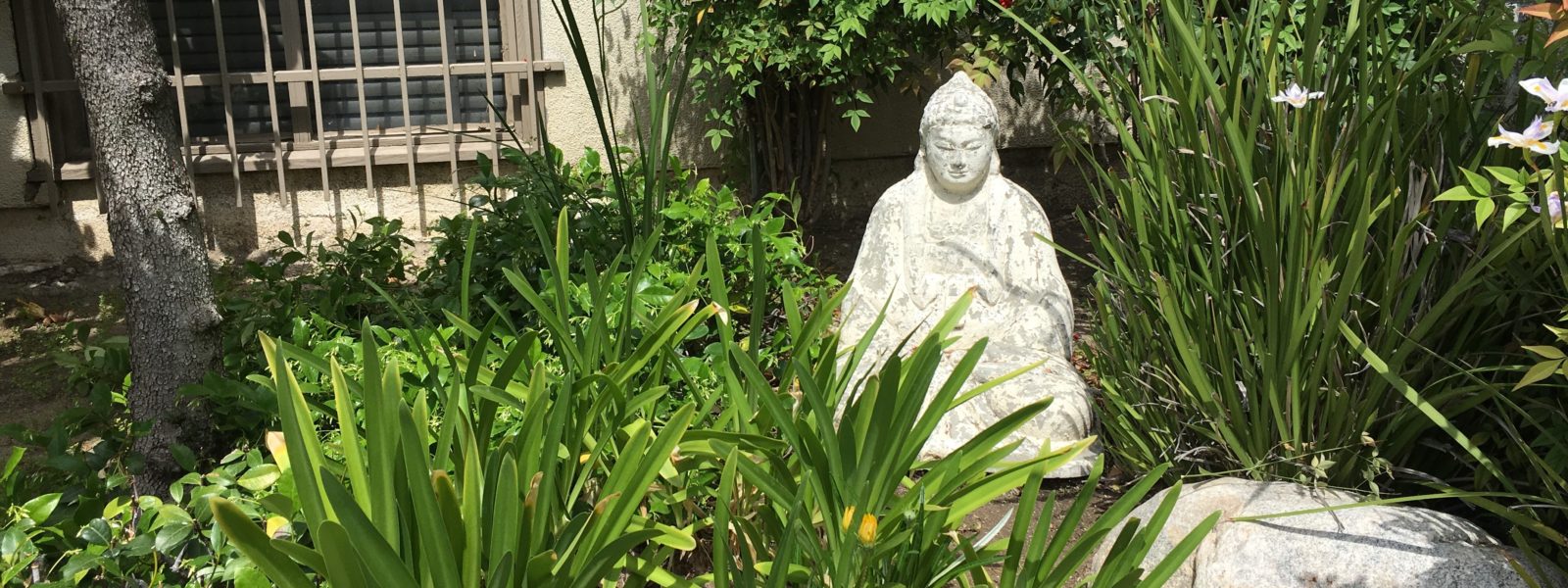Eshinni and Kakushinni
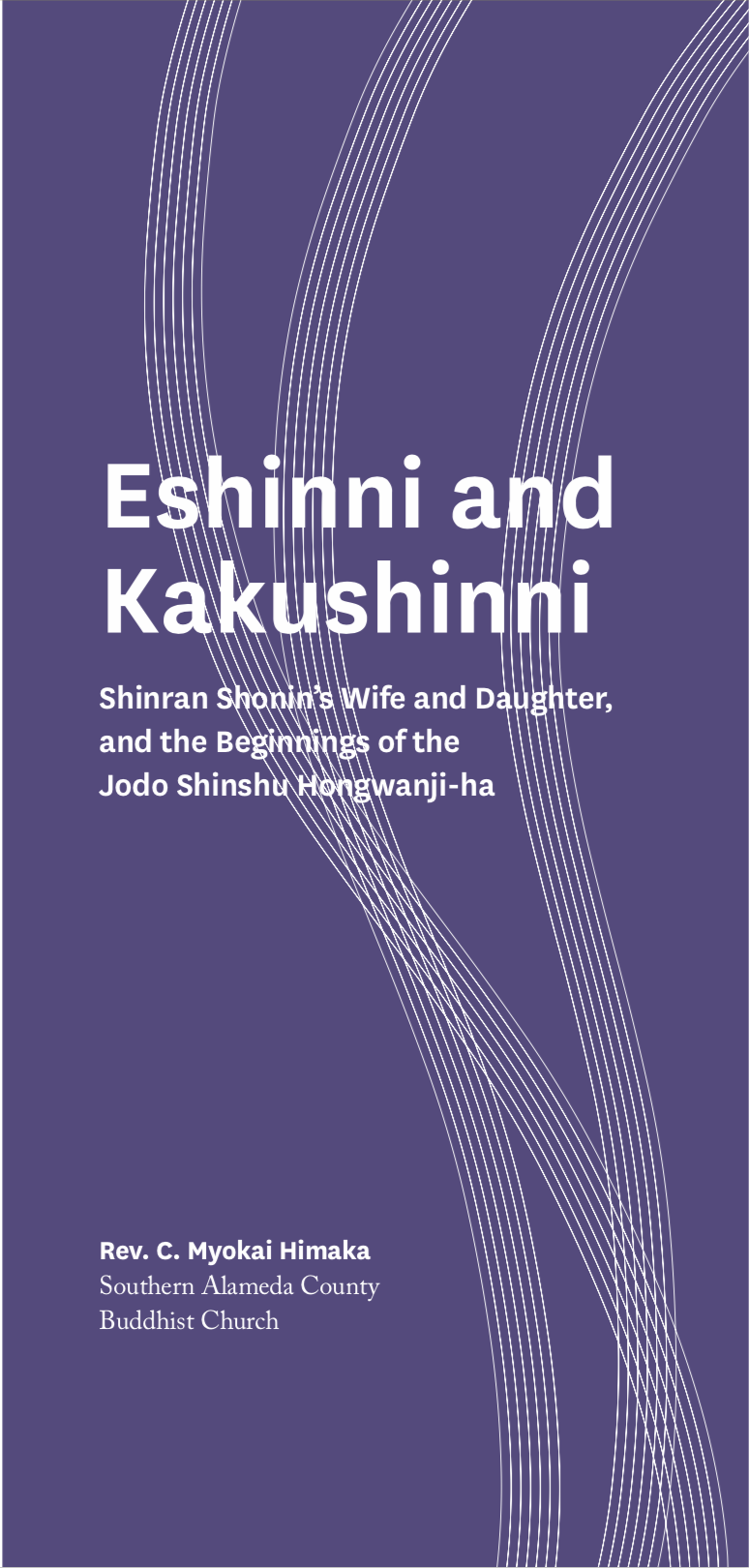 Shinran Shonin’s Wife and Daughter, and the Beginnings of the Jodo Shinshu Hongwanji-ha
Shinran Shonin’s Wife and Daughter, and the Beginnings of the Jodo Shinshu Hongwanji-ha
Jodo Shinshu Buddhism is widely practiced in Japan today. The main organization that carries on Shinran Shonin’s teaching is called the Jodo Shinshu Hongwanji-ha. At the heart of its foundation were two women: Eshinni and Kakushinni. How did they help to perpetuate Shinran’s teaching?
Eshinni
Until recently, very little was known about Eshinni, the woman Shinran Shonin married. However, ten letters that she wrote, dated from around 1254 to 1268, were discovered in the Hongwanji archives in 1921. Eshinni’s letters described important historical events in the life of Shinran Shonin, as well as the conditions in Japan during the Kamakura Era.
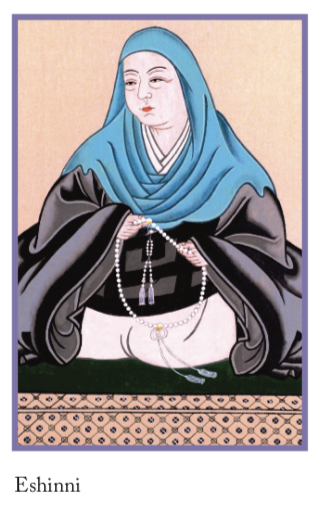 Eshinni (1182-1268) was the daughter of Miyoshi Tamenori, a samurai of high rank in Echigo. She was described as refined and well-educated. Eshinni was also a landowner. This allowed her and Shinran Shonin to survive and raise a family while Shinran Shonin pursued his life’s mission of spreading the Nembutsu teaching imparted by Honen Shonin. The teaching was to recite “Namo Amida Butsu” with deep faith (shinjin), and thus to be embraced by the great Wisdom and Compassion of Amida Buddha.
Eshinni (1182-1268) was the daughter of Miyoshi Tamenori, a samurai of high rank in Echigo. She was described as refined and well-educated. Eshinni was also a landowner. This allowed her and Shinran Shonin to survive and raise a family while Shinran Shonin pursued his life’s mission of spreading the Nembutsu teaching imparted by Honen Shonin. The teaching was to recite “Namo Amida Butsu” with deep faith (shinjin), and thus to be embraced by the great Wisdom and Compassion of Amida Buddha.
Shinran Shonin and Eshinni were married around 1210 and lived in Echigo, where he had been exiled in the year 1207. They moved to the Kanto area sometime between 1212 and 1219, returning to Kyoto with some of their children around 1233. Eshinni lived in Kyoto with Shinran Shonin until around 1254; then it became necessary for her to return to Echigo to take care of her property. At that time, Eshinni was seventy-three years old. She left her eighty-two-year-old husband in the care of their youngest daughter, Kakushinni.
A Hard Life In Echigo
When Eshinni returned to Echigo, the people there were suffering extreme hardships. Famine followed poor harvests, and epidemics claimed the lives of young and old alike. Eshinni was responsible for her farmlands, her two orphaned grandchildren, and her servants and their families. She struggled to keep herself and her dependents from starving. These circumstances prevented her from ever returning to Kyoto.
However, despite the hardships, Eshinni’s belief in the Nembutsu was unwavering. Late in her life, she wrote to her daughter, “I may be going to the land of bliss at any moment. In the land of bliss, we will be able to see everything clearly, so I hope that you shall live the life of the Nembutsu and come to join me there.” Eshinni passed away in the year 1268.
Kakushinni
Kakushinni (1224-1283) was born near Mito in present-day Ibaraki Prefecture. Her original name was Ogozen. Some scholars believe that Kakushinni’s birth year was when Shinran Shonin began compiling his major work, the Kyo Gyo Shin Sho (The True Teaching, Practice, and Realization of the Pure Land Way).
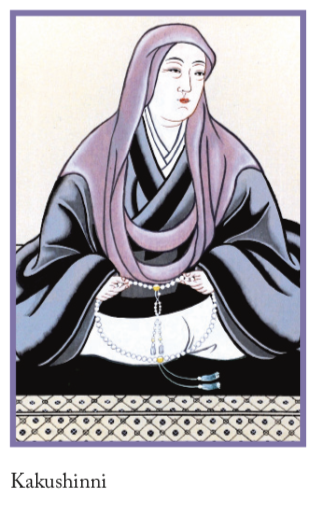 Kakushinni was nine or ten years old when she moved to Kyoto with Shinran Shonin and Eshinni. As an adolescent, Kakushinni left home to serve as a lady-in-waiting in the household of Kuga Michiteru, whose brother was Dogen, the founder of Zen Buddhism. Kakushinni married Hino Hirotsuna, a relative and follower of Shinran Shonin, and in 1239 she gave birth to a son, Koju (known by his Buddhist name, Kakue). Hino Hirotsuna died when Kakue was seven. Kakushinni took Kakue and went back to live with her parents. Until Kakue was about nine, he spent time with Shinran Shonin, learning the essence of Nembutsu. Later, Kakue entered Shoren-in, a Tendai temple in Kyoto.
Kakushinni was nine or ten years old when she moved to Kyoto with Shinran Shonin and Eshinni. As an adolescent, Kakushinni left home to serve as a lady-in-waiting in the household of Kuga Michiteru, whose brother was Dogen, the founder of Zen Buddhism. Kakushinni married Hino Hirotsuna, a relative and follower of Shinran Shonin, and in 1239 she gave birth to a son, Koju (known by his Buddhist name, Kakue). Hino Hirotsuna died when Kakue was seven. Kakushinni took Kakue and went back to live with her parents. Until Kakue was about nine, he spent time with Shinran Shonin, learning the essence of Nembutsu. Later, Kakue entered Shoren-in, a Tendai temple in Kyoto.
Shinran Shonin’s Passing
Kakushinni took care of Shinran Shonin during his last years. Shinran Shonin entered Nirvana on January 16, 1263, at the age of ninety. In those times, people believed that strange and miraculous events would occur when an important religious person died. Kakushinni wrote a letter to her mother, stating concern that her father’s death was uneventful. Eshinni wrote back, “There is no doubt that your father was born in the Pure Land, and there is no need for me to reiterate this.” Eshinni firmly believed that Shinran Shonin’s birth in the Pure Land was assured because of his complete reliance on Amida’s Vow.
Kakushinni, Protector Of Shinran Shonin’s Legacy
Three years after Shinran Shonin died, Kakushinni married Onomiya Zennen, who owned valuable property in Kyoto. They had at least two sons, one of whom was named Yuizen. In 1272, Shinran’s ashes were removed from their original site of interment at Ohtani in Higashiyama to Zennen’s estate. Some dedicated and influential disciples of Shinran gave monetary donations to construct the Ancestral Hall. This is the nucleus of today’s Jodo Shinshu Hongwanji-ha.
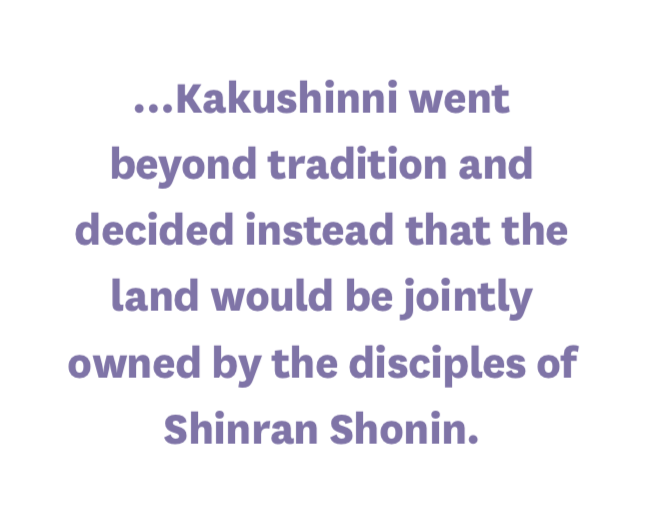 Although the Ancestral Hall belonged to Shinran Shonin’s disciples from Kanto, Zennen gave the property on which it stood to Kakushinni in 1274. He also stipulated that it was for her to decide whether his son, Yuizen, or his stepson, Kakue, would be the heir to inherit her land. However, Kakushinni went beyond tradition and decided instead that the land would be jointly owned by the disciples of Shinran Shonin.
Although the Ancestral Hall belonged to Shinran Shonin’s disciples from Kanto, Zennen gave the property on which it stood to Kakushinni in 1274. He also stipulated that it was for her to decide whether his son, Yuizen, or his stepson, Kakue, would be the heir to inherit her land. However, Kakushinni went beyond tradition and decided instead that the land would be jointly owned by the disciples of Shinran Shonin.
The Nembutsu teaching was a revolutionary doctrine at that time. The Primal Vow of Amida Buddha embraced all. No one was excluded on the basis of class, gender, education, or other biases. Kakushinni may have made her decisions based on this understanding of equality that Shinran Shonin had taught.
Kakushinni also specified that the upkeep of the Ancestral Hall and the position and authority of the Rusushiki (Protector of the Ohtani Ancestral Hall) should be inherited by Shinran Shonin’s descendants. Kakushinni assumed the duties of the first Rusushiki and served at that position until she passed away in 1283, at the age of sixty. Her first son, Kakue, succeeded her as the second Rusushiki. Kakue’s successor was her grandson, Kakunyo (1270- 1351). He changed the role of the Rusushiki from a caretaker to an administrator. Today, the head of the Jodo Shinshu Hongwanji-ha is known as the Monshu or Abbot.
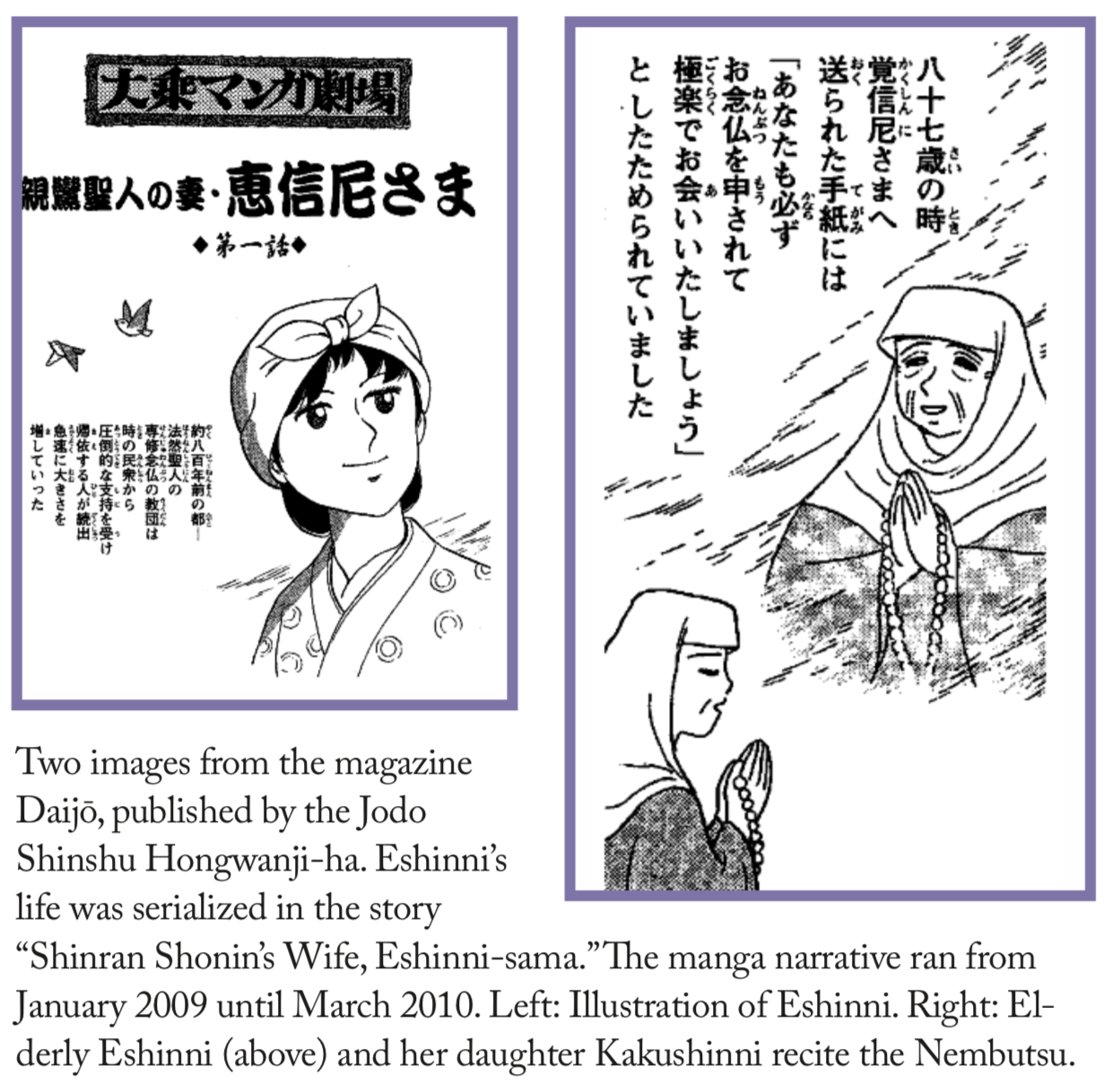 Thus, the contributions of both Eshinni and Kakushinni have had a lasting impact on Jodo Shinshu Buddhism. Eshinni gave Shinran Shonin her complete dedication and support, while Kakushinni established the foundation and center from which to transmit his teachings for many generations. Eshinni and Kakushinni represented women of the Kamakura Era who were confident and self-aware, and who actively participated in the history of Japan.
Thus, the contributions of both Eshinni and Kakushinni have had a lasting impact on Jodo Shinshu Buddhism. Eshinni gave Shinran Shonin her complete dedication and support, while Kakushinni established the foundation and center from which to transmit his teachings for many generations. Eshinni and Kakushinni represented women of the Kamakura Era who were confident and self-aware, and who actively participated in the history of Japan.
Rev. Carol Himaka, Southern Alameda County Buddhist Church
References
Dobbins, James (2004). Letters of the Nun Eshinni. Honolulu: University of Hawai’i Press.
Hongwanji International Center (2002). Jodo Shinshu: A Guide. Kyoto: Jodo Shinshu Hongwanji-ha.
Jodo Shinshu Buddhist Temples of Canada (2010). “Eshinni.” www.bcc.ca/ jodoshinshu/eshinni.html
Eshinni and Kakushinni Brochure (PDF)
Continue to Ondobo: Nembutsu Fellows, Equal and Free

